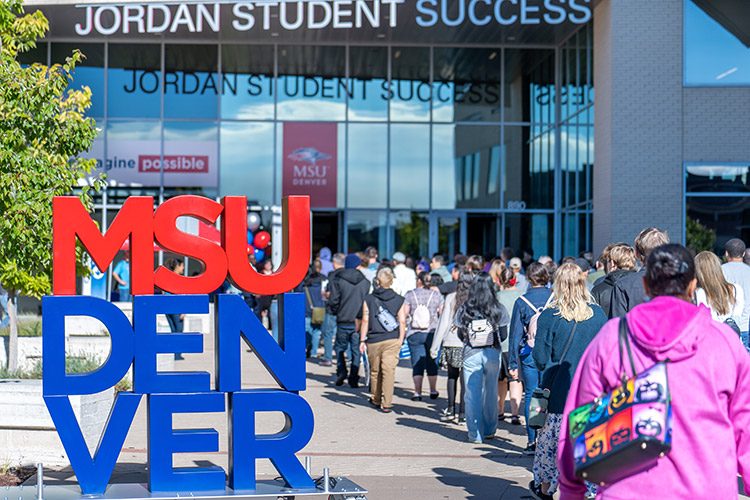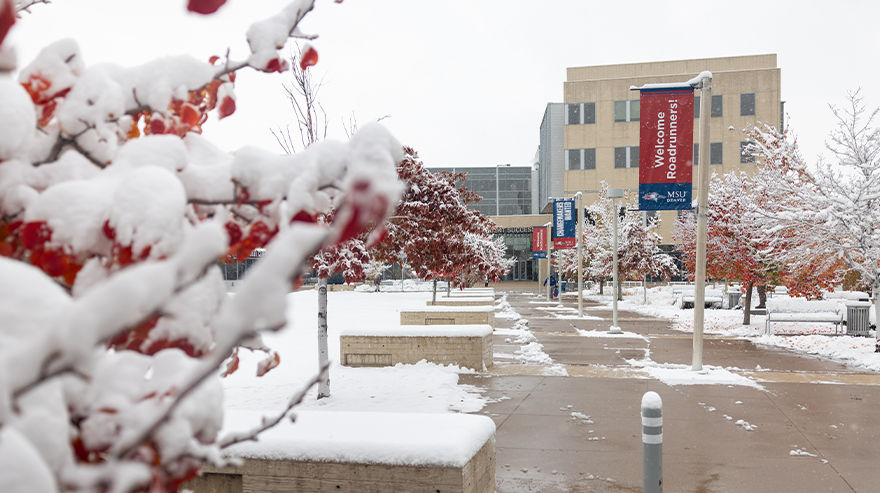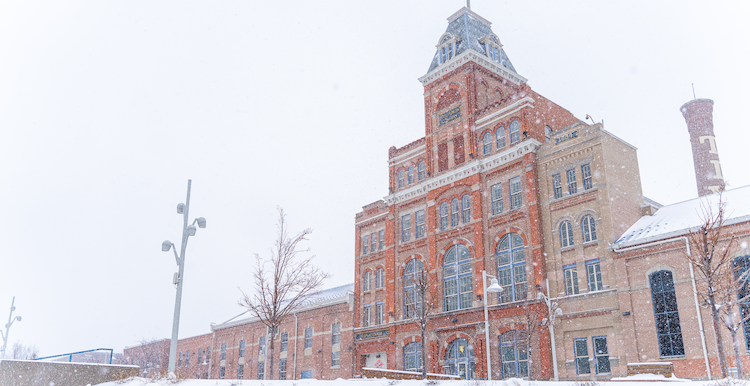Improved student retention and expanded concurrent-enrollment programs helped boost Metropolitan State University of Denver’s fall enrollment by 2% over last year’s number, according to the University’s recently released fall census, an annual measure of enrollment and demographic trends.
This year’s data shows that 17,782 students are enrolled at MSU Denver, the highest number since fall 2020.
MSU Denver drew more students this year despite delays in the rollout of a new Free Application for Federal Student Aid, which college administrators nationwide worried would hamper fall enrollment.
But thanks to the focused efforts of faculty and staff members across the University, MSU Denver was able to buck those expectations, said President Janine Davidson, Ph.D.
“Faculty and staff implemented targeted interventions to help us recover from the pandemic and stabilize enrollment, and now we are gaining momentum,” Davidson said. “Each student-success strategy strengthens retention, which increases public and private funding, attracts more students and allows us to reinvest in our people, processes and technology. Like a flywheel, every action builds on the previous one, creating a cycle of continuous improvement and growth.”
This year’s snapshot of University trends shows:
- The undergraduate head count stands at 16,600, up 2% from 16,345 last fall.
- Pell Grant eligibility grew to 38.5%, a 5.5 percentage-point increase over 2023.
- Concurrent enrollment (programs in which high school students take college courses) rose from 6.6% of students enrolled at MSU Denver in 2023 to 8.8% (1,453) this year.
- Undergraduate retention improved by 1.3 percentage points (fall 2022-23: 67.4%; fall 2023-24: 68.7%).
- Forty-eight percent of the current undergraduate student body entered MSU Denver as first-time freshmen; 39.6% were college transfers, with the remainder having entered through concurrent enrollment. Average credit-hour load is 10.61, up slightly from 10.5 in 2023.
Coloradans dominate the diverse student body
Demographically, there were minor shifts in student-body composition. MSU Denver saw slight growth in the number of Black and Latino students as well as a slight decrease in average student age to 24.4 years, down from 24.5. The student body’s gender breakdown remained fairly consistent, with female-identifying students comprising 54.3% of the student body and male-identifying students 45.6% and the remaining 0.1% identifying as neither male nor female.
Additional stats for 2024-25:
- 95.6% are in-state residents.
- 57.8% are first-generation college students.
- 56.1% are students of color.
- 57.7% of undergraduates are full-time students.
FAFSA changes did not prohibit growth in registration or Pell Grants
New student applications were down 4.93%, but registrations were up 3.34%, indicating that delays in the FAFSA did not ultimately impact enrollment. The FAFSA Simplification Act seems to have had its intended effect at MSU Denver, with the percentage of undergraduate students eligible to receive a federal Pell Grant increasing from 33% in 2023 to 38.5% this fall.
“Understanding the challenges with the new FAFSA application process, MSU Denver implemented an array of strategies and support systems to help students and parents navigate the changes, including workshops, trainings, comprehensive website resources and a robust communication plan,” said Chief Enrollment Officer Long Huynh, DBA. “This positive registration data tells us that our efforts to streamline our enrollment process are working.”
Women continue to dominate growing graduate student body
Graduate-student enrollment increased from 1,160 in 2023 to 1,182 this year. The graduate student body also saw minor demographic changes, welcoming slightly more American Indian/Native Alaskan, Asian, Latino and international students. Despite slight growth in the number of male graduate students (292, up from 268 in 2023), 75% of MSU Denver’s graduate-student population is female (890).
Annual census informs strategic efforts
In addition to fulfilling state and federal reporting requirements, this data informs University strategic planning, grant reporting and key decisions. Census data is compiled and verified through collaboration with multiple offices, including the Registrar’s Office, Financial Aid and Scholarships, and Innovative and Lifelong Learning, said Buffy Ribble, Ph.D., director of Data and Analytics.
Learn more
Census data can be found on the Office of Institutional Research’s dashboard page and is reflected on the Rowdy Dash to provide a snapshot reference point for efforts the University is making to reach goals laid out in the 2030 Strategic Plan.
For information on new or existing data-analysis requests, please visit the University’s Business Intelligence page.
Keep an eye out for the University Fact Sheet and updates to the centralized Stat Vault coming this semester.
“I could not be prouder of what we have accomplished as a team,” Huynh said. “Student success is our No. 1 focus, and we have been working hard to remove barriers that prevent students from attending and succeeding at MSU Denver.”








